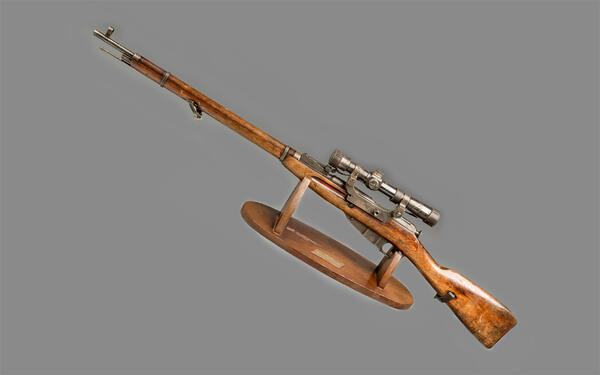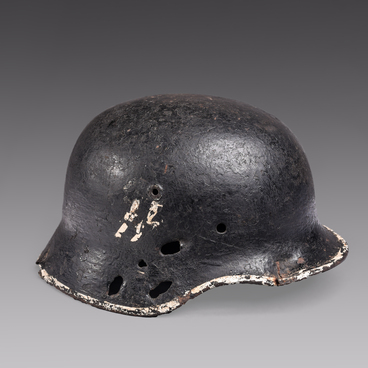In the 1930s, the Red Army underwent rearmament. At this time, the Mosin rifle of the 1891/1930 model was converted. The designers improved the quality of processing the bore of the weapon, and also added an optical sight. A total of 108,345 sniper rifles of this type were produced, they were intensively used during the Soviet-Finnish and World War II. The Mosin rifle was a reliable and effective weapon.
This variant of the rifle became popular not only among infantry soldiers, but also among soldiers-snipers. So, the gun presented in the museum belonged to the sniper Nikolai Galushkin. For the first time he took part in hostilities in January 1942 near Moscow, was soon wounded in the arm and went to the rear for treatment. In May of the same year, he returned to the front, where he was assigned as a sniper rifleman in the 1st Battalion of the 49th Infantry Regiment of the 50th Infantry Division of the 33rd Army of the Western Front.
In June Galushkin was wounded again. The award sheet noted that by the fall of 1942, the sniper had killed 115 enemy soldiers. By order to the troops of the 5th Army No. 583 dated July 13, 1942, he was awarded the medal ‘For Courage’. On October 30, 1942, Galushkin was awarded the Order of the Red Banner.
Soon the sniper became famous, in the newspapers there were repeated notes and articles dedicated to him and other soldiers of the 49th Infantry Regiment. The German command appointed a reward for Galushkin’s life, and the soldiers and officers of the Wehrmacht were warned of the increased danger in those areas where he served.
The commander of the Southwestern Front, Rodion Malinovsky, ordered that Galushkin be awarded the title of Hero of the Soviet Union. Official documents stated that the heroic soldier not only killed 225 enemy soldiers and officers, but also trained 38 snipers who ‘have on their account dozens of destroyed Germans’.
By the decree of the Presidium of the Supreme Soviet of the USSR dated October 26, 1943, Galushkin was awarded the Order of Lenin. The sniper fought in battles on the territory of Ukraine and Eastern Europe, including taking part in the liberation of Kirovograd and the capture of the city Yassy. Galushkin finished the war with his regiment in Prague.
This variant of the rifle became popular not only among infantry soldiers, but also among soldiers-snipers. So, the gun presented in the museum belonged to the sniper Nikolai Galushkin. For the first time he took part in hostilities in January 1942 near Moscow, was soon wounded in the arm and went to the rear for treatment. In May of the same year, he returned to the front, where he was assigned as a sniper rifleman in the 1st Battalion of the 49th Infantry Regiment of the 50th Infantry Division of the 33rd Army of the Western Front.
In June Galushkin was wounded again. The award sheet noted that by the fall of 1942, the sniper had killed 115 enemy soldiers. By order to the troops of the 5th Army No. 583 dated July 13, 1942, he was awarded the medal ‘For Courage’. On October 30, 1942, Galushkin was awarded the Order of the Red Banner.
Soon the sniper became famous, in the newspapers there were repeated notes and articles dedicated to him and other soldiers of the 49th Infantry Regiment. The German command appointed a reward for Galushkin’s life, and the soldiers and officers of the Wehrmacht were warned of the increased danger in those areas where he served.
The commander of the Southwestern Front, Rodion Malinovsky, ordered that Galushkin be awarded the title of Hero of the Soviet Union. Official documents stated that the heroic soldier not only killed 225 enemy soldiers and officers, but also trained 38 snipers who ‘have on their account dozens of destroyed Germans’.
By the decree of the Presidium of the Supreme Soviet of the USSR dated October 26, 1943, Galushkin was awarded the Order of Lenin. The sniper fought in battles on the territory of Ukraine and Eastern Europe, including taking part in the liberation of Kirovograd and the capture of the city Yassy. Galushkin finished the war with his regiment in Prague.



